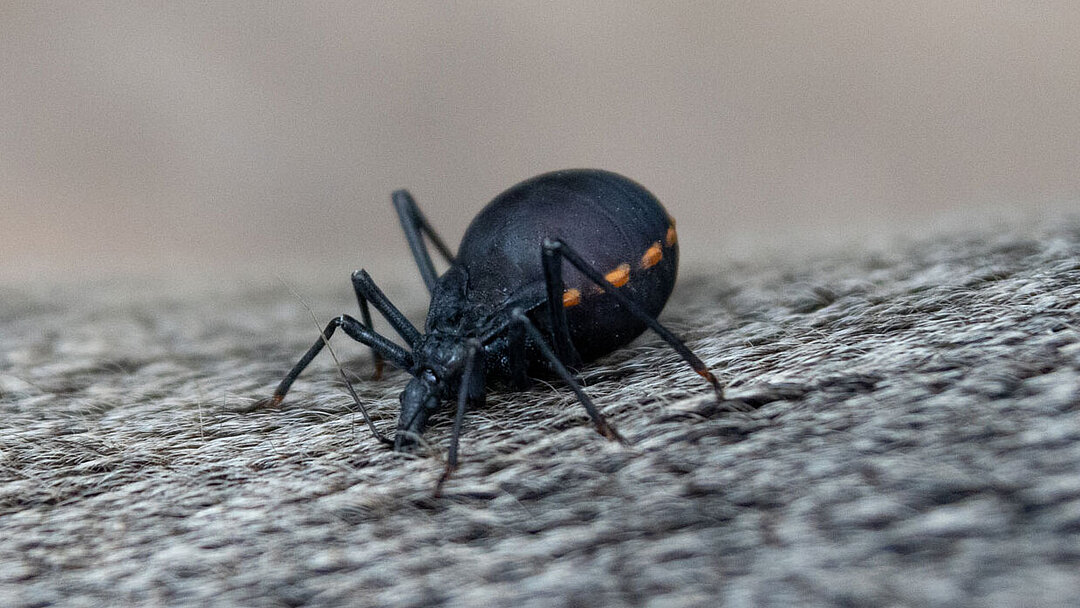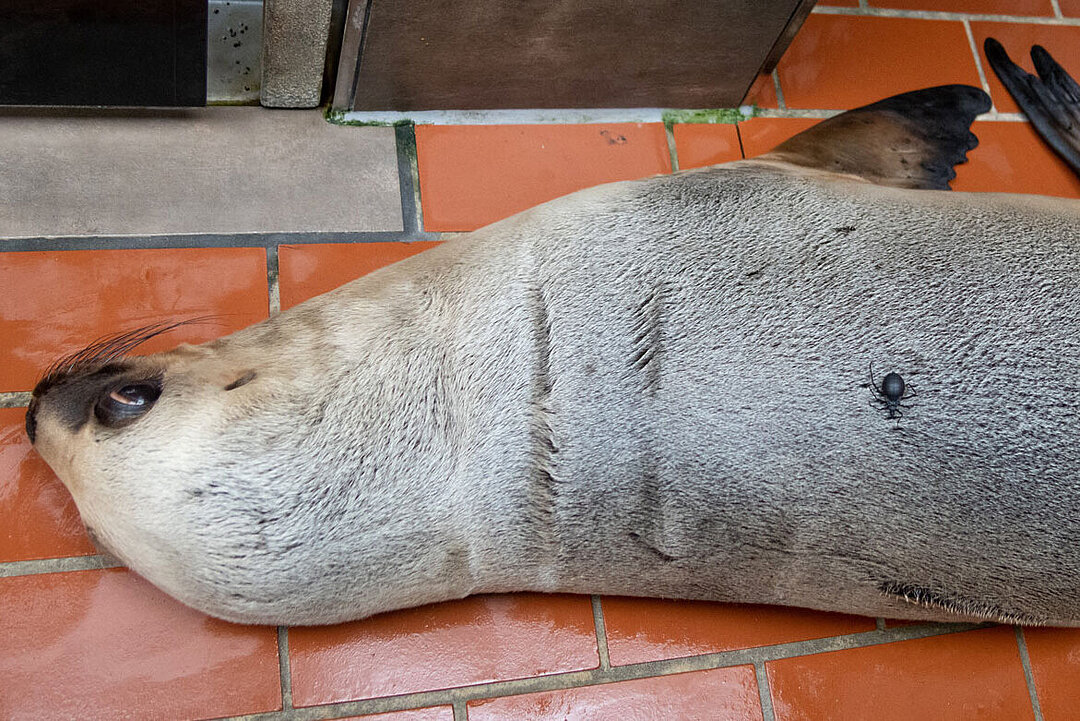
Taking blood samples from wild animals can be a challenging task for the veterinary team at Hellabrunn Zoo. Most animals do not allow themselves to be examined without a fuss or voluntarily participate in blood draws. To assist with this undertaking, the veterinarians have recruited a special group of helpers: bloodthirsty insects.
Reduviidae is a family of predatory blood-sucking bugs of medical importance owing to their suitability to act as “living syringes”. Using these insects has a major advantage: it allows the veterinarians to collect blood from animals without the need for sedation. While some animals at Hellabrunn, such as elephants, tigers and polar bears, have been trained by their keepers to participate in blood draws without anaesthesia, this is not so easy with other animals such as Java banteng or South American sea lions.
For these animals, the veterinarians rely on the help of predatory bugs to collect their blood – a non-invasive method for obtaining samples. The parasitic insects are typically found in the warm, less hairy areas of the animals’ body. To take a blood sample, the veterinarians simply collect the blood-sucking bug after it has bitten and fed on its host. The bite of a predatory bug is completely harmless to the zoo animals – however they may feel a tingling sensation as the bug crawls around the body looking for a suitable place to sink its mandibles into. The actual bite is generally painless due to the anaesthetic effect of the saliva injected, so it may often go unnoticed.
“Thanks to predatory bugs, we are able to obtain blood samples from certain species at the zoo without any stress that would otherwise be difficult to collect,” says veterinarian Dr Maike Lücht. “The ‘bug blood’ is particularly suitable for diagnosing a variety of infectious pathogens.”
Predatory bugs in the 5th larval stage draw around 1 to 1.5 ml of blood per bite. This amount is usually enough to conduct the required health check tests. After the bug has fed on its host, the blood is drawn out of the insect's body using a cannula; the bug can only be used once for medical purposes.
Reduviid or predatory bugs are native to Central and South America. There they have been identified as a carrier of Chagas disease. The predatory bugs used at Hellabrunn Zoo are specially bred for the purpose of collecting blood samples and cannot transmit any diseases.
Hellabrunn Zoo is not the only zoological institution that uses predatory bugs as living syringes. Zoo veterinarians from all over Germany share their experiences in the use of bugs. “Creativity is definitely required so that the bugs are not shaken off or even eaten before or during the bloodsucking process. We also exchange ideas about the diagnostic methods for which ’bug blood’ can be used,” adds Dr Lücht.
Animal monitoring data not only ensures a healthy zoo population, but also broadens knowledge about wild animals. “As a scientifically-led zoo, one of our key missions is to constantly expand our knowledge of wildlife conservation,” says zoo director Rasem Baban. “I am always struck by the creative methods used in veterinary medicine.”
